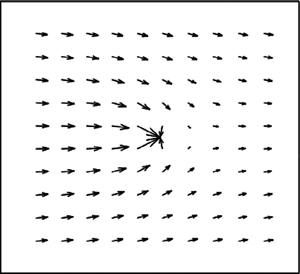Scattering and absorption of electromagnetic radiation with cylindrical objects
DOI:
https://doi.org/10.3103/S0735272723080010Keywords:
diffraction, thin wire, absorption, scatteringAbstract
In this paper, there are researched resonance effects occurring when an electromagnetic wave falls on a cylinder. The nature of the effects depends on the ratio between the diameter of the cylinder and the wavelength of the radiation and on the cylinder material. In thick cylinders (D >> λ) without absorption, surface wave resonances occur in the form of peaks regularly following each other on the curve of dependence of scattering on the diameter. The follow-up period is determined by the refractive index. In very thin metal wires (D << λ) the effect of abnormally strong absorption of electromagnetic radiation is observed. The absorption efficiency factor of a metal wire with a diameter of several micrometers in the centimeter range of wavelengths reaches several hundred. Calculations of the distribution of the electromagnetic field inside and outside the wire showed a significant increase in the intensity of the electromagnetic field inside the cylinder at certain ratios between the diameter of the wire and the wavelength of radiation. The trajectories of the Poynting vector flow are distorted, and energy enters the wire from all sides. This effect is non-resonant. Fano resonances occur in thin cylindrical wires with a high refractive index and low absorption. At the same time, for some diameters, the scattering increases, and a very narrow resonant peak appears, while for others, the scattering is very small. The wire becomes invisible at a certain wavelength.
References
- G. Mie, “Contributions to the optics of turbid media, particularly of colloidal metal solutions,” Ann. der Phys., vol. 330, no. 3, pp. 377–445, 1908, doi: https://doi.org/10.1002/andp.19083300302.
- P. Debye, “Der Lichtdruck auf Kugeln von beliebigem Material,” Ann. der Phys., vol. 335, no. 11, pp. 57–136, 1909, doi: https://doi.org/10.1002/andp.19093351103.
- J. W. Nicholson, “The scattering of light by a large conducting sphere,” Proc. London Math. Soc., vol. s2-9, no. 1, pp. 67–80, 1911, doi: https://doi.org/10.1112/plms/s2-9.1.67.
- J. W. Nicholson, “The scatterring of light by a large conducting sphere,” Proc. London Math. Soc., vol. s2-11, no. 1, pp. 277–284, 1913, doi: https://doi.org/10.1112/plms/s2-11.1.277.
- G. Thilo, “Der Strahlungsdruck auf Kreiszylinder aus beliebigem Material,” Ann. der Phys., vol. 367, no. 14, pp. 531–568, 1920, doi: https://doi.org/10.1002/andp.19203671404.
- J. R. Wait, “Scattering of a plane wave from a circular dielectric cylinder at oblique incidence,” Can. J. Phys., vol. 33, no. 5, pp. 189–195, 1955, doi: https://doi.org/10.1139/p55-024.
- A. C. Lind, J. M. Greenberg, “Electromagnetic scattering by obliquely oriented cylinders,” J. Appl. Phys., vol. 37, no. 8, pp. 3195–3203, 1966, doi: https://doi.org/10.1063/1.1703184.
- H. C. van de Hulst, Light Scattering by Small Particles. New York-London: John Wiley and Sons, Chapman and Hall, 1957.
- M. Kerker, The Scattering of Light and Other Electromagnetic Radiation. New York-London: Elsevier, 1969, doi: https://doi.org/10.1016/C2013-0-06195-6.
- C. F. Bohren, D. R. Huffman, Absorption and Scattering of Light by Small Particles. Wiley, 1998, doi: https://doi.org/10.1002/9783527618156.
- M. I. Tribelsky, A. E. Miroshnichenko, “Resonant scattering of electromagnetic waves by small metal particles: a new insight into the old problem,” Physics-Uspekhi, vol. 65, no. 1, pp. 40–61, 2022, doi: https://doi.org/10.3367/UFNe.2021.01.038924.
- W. M. Irvine, “Light scattering by spherical particles: Radiation pressure, asymmetry factor, and extinction cross section,” J. Opt. Soc. Am., vol. 55, no. 1, p. 16, 1965, doi: https://doi.org/10.1364/JOSA.55.000016.
- N. G. Kokodii, “Nature of resonances in a thick refracting cylinder during of an electromagnetic wave,” Opt. Spectrosc., vol. 72, no. 2, pp. 249–251, 1992.
- M. G. Kokodii, A. O. Natarova, A. V. Genzarovskiy, I. A. Priz, “Interaction between thin conductive fibers and microwave radiation,” Opt. Quantum Electron., vol. 55, no. 3, p. 256, 2023, doi: https://doi.org/10.1007/s11082-022-04389-x.
- U. Fano, “Effects of configuration interaction on intensities and phase shifts,” Phys. Rev., vol. 124, no. 6, pp. 1866–1878, 1961, doi: https://doi.org/10.1103/PhysRev.124.1866.
- K. B. Samusev, M. V. Rybin, A. K. Samusev, M. F. Limonov, “Invisibility of a finite dielectric cylinder under Fano resonance conditions,” Phys. Solid State, vol. 57, no. 10, pp. 1991–1996, 2015, doi: https://doi.org/10.1134/S1063783415100273.
- Y. M. Poplavko, Y. V. Didenko, D. D. Tatarchuk, “Microwave parameters of components of shielding composites. Part 2: Mechanisms of microwave absorption,” Radioelectron. Commun. Syst., vol. 65, no. 12, pp. 641–653, 2022, doi: https://doi.org/10.3103/S0735272723010041.
- Y. Poplavko, D. Tatarchuk, Y. Didenko, D. Chypegin, “Microwave absorbing composite materials,” Radioelectron. Commun. Syst., vol. 66, no. 1, pp. 23–32, 2023, doi: https://doi.org/10.3103/S0735272723010065.


